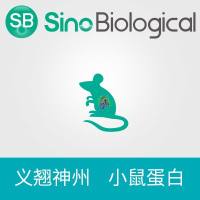Chemokine Receptor Dimerization and Chemotaxis
互联网
互联网
相关产品推荐

CXCL9/MIG重组蛋白|Recombinant Mouse CXCL9 / MIG / C-X-C motif chemokine 9 Protein
¥1080

LDLR / LDL Receptor 兔单抗 (PE)
¥1100

CMKLR1/CMKLR1蛋白Recombinant Human Chemerin-like receptor 1 (CMKLR1)重组蛋白Chemokine-like receptor 1(G-protein coupled receptor ChemR23)(G-protein coupled receptor DEZ)蛋白
¥9720

CCL1/CCL1蛋白/C-C motif chemokine 1(Small-inducible cytokine A1)(T lymphocyte-secreted protein I-309)蛋白/Recombinant Human C-C motif chemokine 1 (CCL1)重组蛋白
¥69

CCR8/CCR8蛋白Recombinant Human C-C chemokine receptor type 8 (CCR8)-VLPs (Active)重组蛋白(CC chemokine receptor CHEMR1) (CMKBRL2) (Chemokine receptor-like 1) (CKR-L1) (GPR-CY6) (GPRCY6) (TER1) (CDw198) (CKRL1) (CMKBR8) (CMKBRL2)蛋白
¥3420

